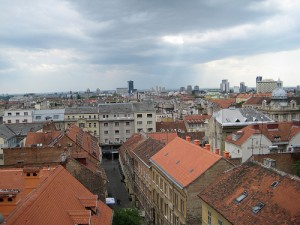 While most travelers head straight for the Dalmatian coast, capital city Zagreb has a lot to offer for those who want to experience authentic Croatian culture. With several museums, parks, and arguably Europe’s most beautiful cemetery, Zagreb is well worth a few days of exploring. The city is situated between the southern slopes of the Medvednica mountain and both the northern and southern bank of the Sava river. Wander through the open-air market with a coffee in hand and take in the beauty of Zagreb’s medieval architecture and rich history.
While most travelers head straight for the Dalmatian coast, capital city Zagreb has a lot to offer for those who want to experience authentic Croatian culture. With several museums, parks, and arguably Europe’s most beautiful cemetery, Zagreb is well worth a few days of exploring. The city is situated between the southern slopes of the Medvednica mountain and both the northern and southern bank of the Sava river. Wander through the open-air market with a coffee in hand and take in the beauty of Zagreb’s medieval architecture and rich history.
Maksimir Park
Zagreb is full of wonderful wooded enclaves to explore. One such location is Maksimir Park, which was opened in 1794 and is landscaped similar to an English garden park, complete with artificial lakes and alleys. The park’s most popular attractions are the Bellevue Pavilion, which was constructed in 1843, and the Echo Pavilion, which resembles a rustic Swiss cottage.
Zagreb’s Botanical Garden
For a nice change of pace, wander through Zagreb’s botanical garden, which was created in 1890. With 10,000 species of plants and little bodies of water, you can easily spend a few hours walking in the shade.
Mirogoj historical cemetery
Though not quite a park, Mirogoj is one of the most beautiful cemeteries in Europe. Designed by Herman Bollé, one of Croatia’s finest architects, the cemetery features several cupolas and paths mingled with sculptures and impressive tombs. Inside, the cemetery is lush, green and eerily quiet. It’s definitely worth the ten-minute bus ride.
The Medieval fortress of Medvedgrad
Another site worth checking out is the Medvedgrad fortress, on the southern side of Mt Medvednica. Zagreb’s most treasured medieval monument, Medvedgrad was built from 1249 to 1254 to protect the city from Tartar invasions.
Zagreb Cathedral
Not to be missed is Zageb’s most famous building, the Cathedral. First built in the 11th century, Zagreb Cathedral was destroyed by the Tatars in 1242 and subsequently rebuilt by Hermann Bollé, the same architect who designed the Mirogoj cemetery. You can easily wander over the cathedral from the Dolac market.
Museums
Zagreb is home to a variety of historical, cultural and art museums. Not to miss is the Mimara Museum, which was founded with a donation from Ante “Mimara” Topić. Comprising more than 1500 exhibits, the museum features works by Lorenzetti, Cravaggio, Raffaello and Rembrandt. Other museums worth a visit include the Archeological Museum, the Museum of Contemporary Art, and the Croatian Museum of Naïve Art.
Market
Zagreb’s impressive fruit and vegetable market is found in the Dolac quarter. The farmers’ market is the most visited and the best-known farmer’s market in Zagreb, famous for its combination of traditional open market with stalls and a sheltered market below. Located only steps away from the main city square, Ban Jelačić Square, and in the middle between the oldest parts of Zagreb, Dolac is a great place to grab breakfast or coffee and to satisfy cravings for fresh produce. While you’re there, be sure to pick up a Croaterra, an authentic Croatian cake made of organic and whole grain ingredients.
Nightlife
Much like in Italy, outdoor restaurants are good places to start the evening’s entertainment. Tkalcicev Street in Gornji Grad boasts the city’s highest concentration of bars and cafes, which are perfect for people-watching and dining. The Gradska Kavana and Lisna Kavana are both relaxing café bars and are perfect for the night’s first few drinks and to sit and talk.
Along the same street is Oliver Twist, “the place to see and be seen” in Zagreb. This trendy bar offers a wide selection of local and imported beers served on two levels and on an outdoor terrace. The Bulldog Belgian Beer Café is popular with both tourists and locals. It has a huge outdoor area, which is always packed practically any night of the week. The Belgian beer is excellent and as a result, the Bulldog is the destination of choice for many Stag parties. Middle Earth fans will especially appreciate Tolkien’s pub, one of the quirkier places in Zagreb. Decorated with images from the author’s famous books, the pub is a cozy establishment and offers a talking point for strangers to get to know each other. Who doesn’t love LOTR?
In the warmer months, the liveliest parties are found at Jarun Lake, a recreational area where people go to drink and dance (some of the clubs shut down for the summer, as many locals go and visit the Islands). Two of the most popular nightclubs in Zagreb, Aquarius and Piranha, can be found here. A tram ride away, Jarun Lake also has cafes, restaurants, a nude beach, sailing, rowing, windsurfing and bike rentals, so it may be a great place to spend the day (as well as the night
Day trips
Zagreb’s central location offers travelers several options for daily excursions. Samobor is a charming medieval town with well preserved old stores, beautiful parks and hiking trails. The Baroque architecture is picturesque against the wooded hills. Samobor is accessible by car or bus, and be sure to try the ice coffee, which is more like a milkshake.
Vrbovec, east of Zagreb, is another town travelers might want to explore. Vrbovec is famous for cooking old Croatian specialties and a quaint example of authentic Croatian culture. Travelers say that once you come to Vrbovec, you’ll feel like you’re at home.
Lastly, visitors might want to wander around ancient castle ruins, which are situated surprisingly close to the city itself. Escape for a few hours into medieval history.
photo by phillipshannon on Flickr
 Unfortunately, changing money isn’t as easy as it is in many other Central American countries. In fact, it is border line troublesome. Trying to exchange any type of currency other than the US dollar is a hard thing to do outside of the international airports. Even trying to exchange currency from nearby countries can prove to be harder than expected.
Unfortunately, changing money isn’t as easy as it is in many other Central American countries. In fact, it is border line troublesome. Trying to exchange any type of currency other than the US dollar is a hard thing to do outside of the international airports. Even trying to exchange currency from nearby countries can prove to be harder than expected. Any traveler knows it: if you speak at least a bit of the local language, you can enjoy a country way better than if you are stuck with using only English. Not to mention that you can learn a lot more about the culture and people if you can communicate with them properly.
Any traveler knows it: if you speak at least a bit of the local language, you can enjoy a country way better than if you are stuck with using only English. Not to mention that you can learn a lot more about the culture and people if you can communicate with them properly.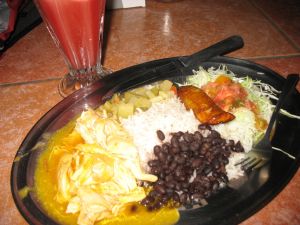 When visiting Panama’s tourism hot spot in Bocas del Toro, you will find a wide variety of restaurants that cater to both tourists and locals. Along the waterfront are touristy restaurants with great outdoor seating built on docks over the water. These establishments offer standard fare at slightly inflated prices. But, these are great places to get a coffee in the mornings and enjoy the watching the sun reflect off the Caribbean waters.
When visiting Panama’s tourism hot spot in Bocas del Toro, you will find a wide variety of restaurants that cater to both tourists and locals. Along the waterfront are touristy restaurants with great outdoor seating built on docks over the water. These establishments offer standard fare at slightly inflated prices. But, these are great places to get a coffee in the mornings and enjoy the watching the sun reflect off the Caribbean waters. On rainy day in Bocas del Toro, my travel companion Lindsey and I played cards in our hostel (Mondu Taitu) and brainstormed activities that could be equally fun in sun as in the rain. After talking to David, one of the friendly American owners of Mondu Taitu, we decided a bike ride through the island to Playa del Drago on the opposite side was just the thing to do. David told us the bike ride was just as fun, if not more, in the rain and the drizzle would keep us from getting too hot. The journey was 15 km each way and hilly, but we were up for the challenge.
On rainy day in Bocas del Toro, my travel companion Lindsey and I played cards in our hostel (Mondu Taitu) and brainstormed activities that could be equally fun in sun as in the rain. After talking to David, one of the friendly American owners of Mondu Taitu, we decided a bike ride through the island to Playa del Drago on the opposite side was just the thing to do. David told us the bike ride was just as fun, if not more, in the rain and the drizzle would keep us from getting too hot. The journey was 15 km each way and hilly, but we were up for the challenge.  Albrook Bus Terminal
Albrook Bus Terminal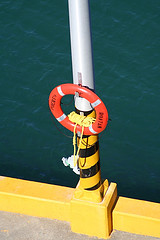 In the grand scheme of things, Honduras it still very young when it comes to tourisim. As such, the country has done little to enforce safety in most of the major tourist areas. This point is not meant to scare you away from visiting Honduras, but more to make sure you are aware of the dangers so that you can protect your self from them.
In the grand scheme of things, Honduras it still very young when it comes to tourisim. As such, the country has done little to enforce safety in most of the major tourist areas. This point is not meant to scare you away from visiting Honduras, but more to make sure you are aware of the dangers so that you can protect your self from them.  While each country in Central America has its own take on food, there are a few staple items that you can find everywhere. If you have ever been anywhere in Central America, you knew right away what I was talking about, rice and beans. Rice and beans in Honduras? Go figure. Aside from this Central America staple items, there are a number of other popular dishes in the country.
While each country in Central America has its own take on food, there are a few staple items that you can find everywhere. If you have ever been anywhere in Central America, you knew right away what I was talking about, rice and beans. Rice and beans in Honduras? Go figure. Aside from this Central America staple items, there are a number of other popular dishes in the country.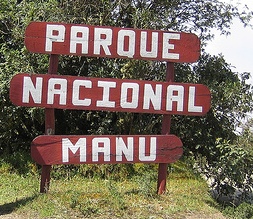 Manu National Park (Parque Nacional Manu) is the largest national park in Peru, covering an area of 15,328 sq km/ 5,918 sq miles. It has been designated as a UNESCO World Heritage Site and even today it’s fairly inaccessible by road.
Manu National Park (Parque Nacional Manu) is the largest national park in Peru, covering an area of 15,328 sq km/ 5,918 sq miles. It has been designated as a UNESCO World Heritage Site and even today it’s fairly inaccessible by road.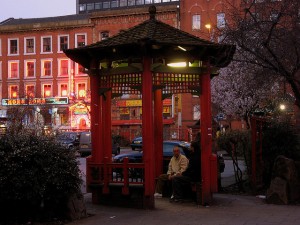 Although the first Chinese restaurants appeared in Manchester right after the World War II, it wasn’t until the 1970s that the streets surrounding Nicholas Street, Faulkner Street and George Street became a center of Chinese culture and cuisine.
Although the first Chinese restaurants appeared in Manchester right after the World War II, it wasn’t until the 1970s that the streets surrounding Nicholas Street, Faulkner Street and George Street became a center of Chinese culture and cuisine.